Mark Nisbet
All about Mark Nisbet and his music
Amplifiers
Let you to hear the bass
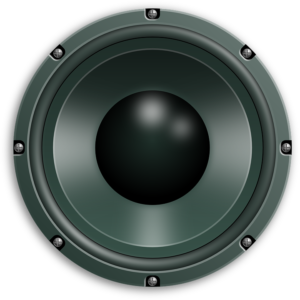 |
Through Speakers If attached to a loud speaker your amplifier will enable you and anyone else present to hear the sound of the bass. Speakers come in many sizes and combinations. | 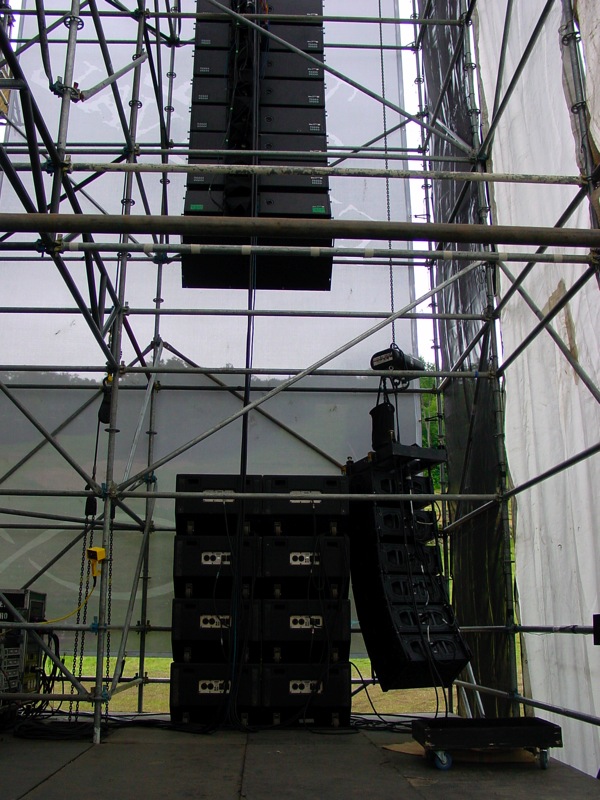 |
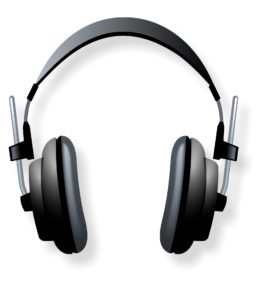 |
Through Headphones Many amplifiers have a headphone socket which will allow you to hear the bass without disturbing those around you | |
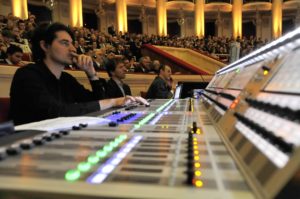 |
Over the PA Most bass amplifiers have an output that allows them to be plugged into a PA system for live performances. This projects the sound out through the main speakers to the audience and also feeds monitors to ensure you can be heard by other performers. |
Make it loud enough:
To fill a room When you play with and/or for others they need to hear you. The first stage in achieving this is plugging into an amplifier. As a general rule the bigger the room the more power you will need unless you are also plugging into a PA. If a PA is being used (an important part of which is another amplifier) your own amp will be used to shape your sound and to allow you to hear yourself though in a big setup you will have additional monitoring.
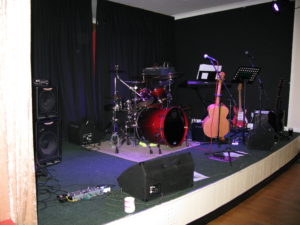 To match the drums An important part of the bassists role is playing in sync with the drummer. Acoustically the drummer is the loudest member of the band so your amplifier needs to bring you up to their level ….
To match the drums An important part of the bassists role is playing in sync with the drummer. Acoustically the drummer is the loudest member of the band so your amplifier needs to bring you up to their level ….
To be heard above the guitar ! Because the electric guitar creates a sound that covers a much wider frequency range than the bass guitar, a bass amp of the same wattage as a guitar amp creates considerably less volume, it is said to move less air. This often means that an electric guitarist has the capability of being louder than everyone else. Certainly in a practice scenario it should never be a competition to see who is loudest … ultimately everyone needs to balance to the drums and ensure the singer can be heard clearly without straining their voice. A PA with monitoring will help but only if the person controlling that is in control and they can’t easily control individual instrument amplifiers, often refereed to as the back-line, these need to be kept at a reasonable level.

Shape the sound
Adding distortion There are several definitions of distortion but essentially it refers to a change in the sound and is usually associated with a break up or clipping of the sound which can often add nice qualities but not always. The circuitry in an amp will affect the sound and valves in particular are credited with doing that in a warm and pleasant way.
A a result, even though valves are very outdated technology they feature in new instrument amplifiers to this day. Many new digital amplifiers and software amp simulaters go to great lengths to emulate a valve sound; how successfully is the subject of long and heartfelt debate
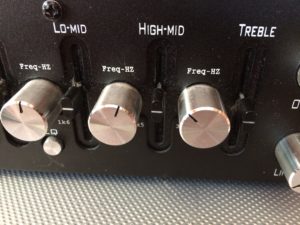 Providing tone Controls (EQ)The vast majority of amplifiers have tone controls of some description though some bassists will choose to leave them all on middle settings to allow the sound of the bass to be transferred as cleanly as possible. Simple controls consist of bass and treble but most have a middle control too. Quite allot of amps nowadays have upper and lower middle controls and thes may be parametric which means there is one control for the frequency to be adjusted and another to control how much cut or boost is applied to that frequency. All these controls allow you to tailor the sound to taste and to enable you to fill out the bass but also cut through the other instruments and be heard as necessary.
Providing tone Controls (EQ)The vast majority of amplifiers have tone controls of some description though some bassists will choose to leave them all on middle settings to allow the sound of the bass to be transferred as cleanly as possible. Simple controls consist of bass and treble but most have a middle control too. Quite allot of amps nowadays have upper and lower middle controls and thes may be parametric which means there is one control for the frequency to be adjusted and another to control how much cut or boost is applied to that frequency. All these controls allow you to tailor the sound to taste and to enable you to fill out the bass but also cut through the other instruments and be heard as necessary.
EffectsEffects manipulate the sound in various way and may be built into an amplifier or as separate units. The commonest built in effects are various types of distortion though compressors are quite common too reverb is common on guitar amplifiers but not so much on bass amps as it is not normally considered to be benefficial on bass sounds. Many amplifiers provide an effects loop, this is a low level signal that can be taken from the amp, passed through a number of external effects and then fed back into the amplifier before going through the power amplifier. The power amplifier creates the loud signal that is sent to the loud speakers.